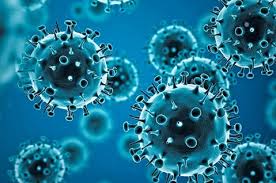
New Study Strengthens Theory Linking Wuhan Wet Market to COVID-19 Outbreak
A recent study has added weight to the theory that the Hunan Seafood Wholesale Market in Wuhan, China, was the epicenter of the COVID-19 pandemic. The research, which analyzed over 800 environmental samples taken from the market in January 2020, found evidence of animal species known to carry the virus. These findings, published in the journal Cell on September 18, offer further insights into how the virus likely jumped from animals to humans.
The study's co-author, Kristian Andersen, director of infectious disease genomics at Scripps Research, emphasized the significance of the findings. "This paper adds another layer to the accumulating evidence that all points to the same scenario: that infected animals were introduced into the market in mid- to late November 2019, which sparked the pandemic," Andersen said.
One of the key discoveries was the presence of genetic material from raccoon dogs, a species known to be susceptible to the coronavirus. The study found that raccoon dogs were closely linked to the wildlife stalls in the market where traces of SARS-CoV-2 were detected. Additionally, genetic material from other species such as masked palm civets, the Hoary bamboo rat, and the Malayan porcupine was also associated with the virus.
Michael Worobey, head of ecology and evolutionary biology at the University of Arizona, and a co-author of the study, described the situation in Wuhan in late 2019 as a "set-up for trouble." He stated, "This is the most risky thing we can do -- take wild animals that are teeming with viruses and then play with fire by bringing them into contact with humans living in the heart of big cities, whose population densities make it easy for these viruses to take hold."
Following the market's closure in early 2020, China’s version of the Centers for Disease Control and Prevention (CDC) swiftly moved in to investigate. The team collected hundreds of samples from floors, walls, and stall surfaces. A few days later, the Chinese CDC returned to focus on wildlife-related areas, swabbing cages, carts, drains, and sewers.
Although most of the animals had been removed by the time the Chinese CDC team arrived, Florence Debarre, co-author and researcher at the French National Center for Scientific Research, explained that remnants of animal DNA and RNA were still present. "We are seeing the DNA and RNA ghosts of these animals in the environmental samples, and some are in stalls where SARS-CoV-2 was found," she said.
The research team conducted genetic sequencing of the samples to track the presence of SARS-CoV-2 and identify the species that may have carried the virus. Their findings suggest that the market was likely the origin of the outbreak, as the diversity of the virus was most prevalent in the market from the very beginning.
The study also aligns with evolutionary analyses of early COVID-19 strains, which indicate that there were very few, if any, human cases before the market outbreak. This pattern is consistent with previous instances of animal viruses making the leap to humans, such as the original SARS coronavirus outbreak in 2002.
Debarre highlighted the importance of understanding the origins of the pandemic to prevent future outbreaks. "There has been a lot of disinformation and misinformation about where SARS-CoV-2 originated," Worobey added. "The reason it’s so important to find out is that this affects national security and public health, not just in the United States but around the world."
The study underscores the need for increased vigilance in managing zoonotic diseases and mitigating risks associated with wildlife markets. Despite the global focus on lab safety since the pandemic began, researchers argue that more needs to be done to reduce the chances of another zoonotic outbreak.
As the search for answers continues, this latest study offers compelling evidence supporting the theory that the Wuhan wet market played a central role in the emergence of the COVID-19 pandemic.